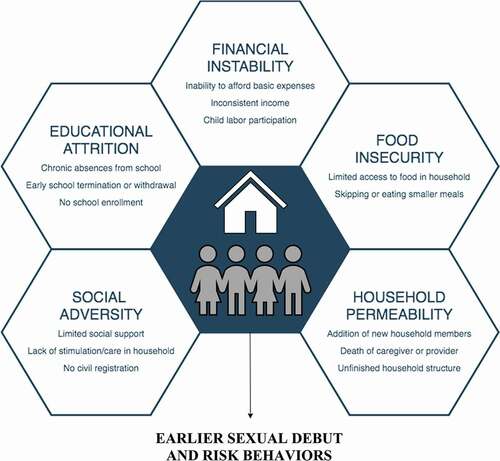Figures & data
Table 1. Operationalization of dichotomous explanatory variables included in analysis, by corresponding domain in the protective deficits framework
Table 2. Descriptive statistics (%) of orphaned and vulnerable children aged 13–17 years in Zambia Family project catchment areas, by sex (N = 735)
Figure 2. Proportion of sexually debuted orphaned and vulnerable children aged 13–17 who report sexual risk behaviors (early sexual debut [before age 15], unprotected last sex, and multiple past-year sex partners), by sex and residence (N = 100)
![Figure 2. Proportion of sexually debuted orphaned and vulnerable children aged 13–17 who report sexual risk behaviors (early sexual debut [before age 15], unprotected last sex, and multiple past-year sex partners), by sex and residence (N = 100)](/cms/asset/48ddd1f0-e3f2-46b5-a341-3ef482acff6a/rvch_a_1975858_f0002_oc.jpg)
Table 3. Unadjusted and adjusted proportional odds ratios (pOR) of sexual risk behaviors (0 – no sexual debut, 1 – sexual debut only, 2 – sexual debut and unprotected last sex and/or multiple past-year sex partners) derived from ordered logistic regression, by demographic and protective deficit factors, among orphaned and vulnerable children (N = 735)
Table 4. Unadjusted and adjusted relative risk ratios (RRR) of early (before age 15) and later (at or after age 15) sexual debut derived from multinomial logistic regression, by demographic and protective deficit factors, among older (ages 15–17) orphaned and vulnerable children (N = 392)
Supplemental Material
Download MS Word (21.2 KB)Data availability
Data presented for this study are available from the corresponding author (MTM) upon reasonable request.

